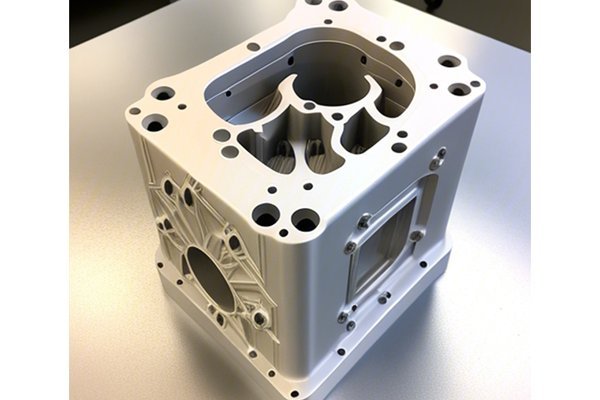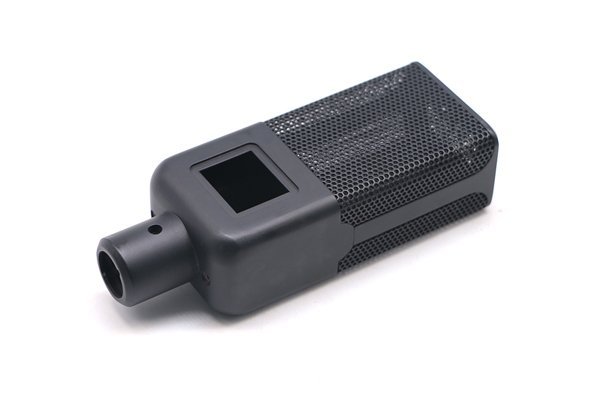Introduction to CNC Machining Plastic
In an ever-evolving world of manufacturing and design, innovation is the name of the game. Have you ever found yourself juggling ideas while wishing for a swift way to bring your concepts to life? Enter CNC machining plastic—a brilliant method that combines precision and efficiency to transform dreams into reality. But what exactly is CNC machining plastic, and how can it redefine your prototyping adventure? Let’s explore this fascinating world together, shall we?
What is CNC Machining?
To kick things off, let’s first get acquainted with CNC machining. The acronym “CNC” stands for Computer Numerical Control. Simply put, it is a method used in manufacturing where computers control machine tools to produce parts. Picture it like a robot artist with a keen eye for detail that can sculpt your designs into tangible objects. With the assistance of specialized software, CNC machines can execute instructions with unparalleled accuracy, crafting everything from intricate patterns to sturdy components.
Understanding CNC Machining Plastic
Now that we have a grip on CNC machining, let’s focus on its plastic variant. CNC machining plastic involves utilizing machines to cut, carve, and shape plastic materials into the desired specifications. It’s akin to molding a piece of dough into a beautiful sculpture—easy if you have the right tools! Some common plastic materials used include acrylic (often known by the brand name Plexiglas), polycarbonate, nylon, and many more. With so many materials at your disposal, the possibilities are endless!
Why Choose CNC Machining Plastic for Prototyping?
Imagine trying to bake a cake. The first attempt may be a bit lumpy, while the second could turn out perfect. Similarly, CNC machining plastic provides immaculate precision and consistency across batches. Whether you’re creating one prototype or a hundred, you can expect identical results every time. This reliability ensures product quality and saves you from the hassle of constant rework.
In today’s entrepreneurial landscape, time is of the essence. Businesses need quick turnarounds to keep pace with market demands. CNC machining plastic offers an impressive production speed. With advanced setups, you could go from design to prototype in mere days—akin to turning your thoughts into reality with the flick of a magic wand.
Let’s face it—creative visions can be limitless. One day you might want an intricately detailed item, while the next, you need something simple yet functional. CNC machining plastic supports a variety of designs, from sophisticated geometric shapes to practical tools. Whatever your imagination conjures, this technology is ready to shape it for you.
Who doesn’t love saving a few bucks? A common misconception is that high-precision tools come with an exorbitant price tag. However, CNC machining plastic can be surprisingly affordable, especially when you consider how little material waste it generates. Unlike traditional machining, which can result in excess shavings and scraps, CNC machines optimize the layout to make the most of each sheet of plastic.
The Process of CNC Machining Plastic
Now that we’re buzzing with excitement about the benefits of CNC machining plastic, let’s dive into the process itself. Understanding it can illuminate how it all comes together:
Everything begins with a design. Using computer-aided design (CAD) software, designers can sketch, model, and simulate their ideas. It’s like painting a picture before setting it on canvas. At this stage, precision is essential, so ensure your design is detailed and ready for translation into a prototype.
Next, you’ll want to decide which type of plastic suits your needs. Different plastics offer varied properties, such as strength, flexibility, and durability. For instance, if you’re designing a protective casement, polycarbonate may be your go-to choice due to its exceptional impact resistance.
Here comes the fun part! The finalized CAD design is converted into a format compatible with the CNC machine. Using computer numerical control software, codes are generated that instruct the machine on how to execute the design. Think of this as teaching a robot the steps to complete a craft project.
Once everything is set, the CNC machine takes over. It starts cutting, milling, drilling, or engraving according to the provided instructions. Like a sculptor chipping away at marble to reveal a masterpiece, the machine removes unnecessary material, revealing your prototype step by step.
After machining, the prototype often requires finishing touches. This might involve sanding smooth edges or applying a polish for a professional appearance. Imagine it as grooming a jewel until it sparkles—the perfect final step to create a polished and aesthetically pleasing product.
Applications of CNC Machining Plastic
So, where can CNC machining plastic truly shine? Well, the sky is the limit! Let’s explore a few delightful applications:
From sleek phone cases to stylish kitchen gadgets, prototypes of consumer products often rely on CNC machining. Designers can create functional and visually appealing items that cater to modern lifestyles.
In the medical realm, precision is critical. CNC machining plastic is used to manufacture components for devices like insulin pens, surgical instruments, and laboratory equipment—where any slight deviation could lead to dire consequences.
Automotive manufacturers love CNC machining plastic for producing lightweight yet durable mechanical components. These parts contribute to both performance and fuel efficiency—a win-win for drivers everywhere.
Are you working on a new gadget? CNC machining plastic can create custom enclosures for electronic devices. It provides the necessary protection while allowing for sleek designs that fit beautifully into any aesthetic.
Overcoming Challenges in CNC Machining Plastic
Like any technology, CNC machining plastic comes with its own set of challenges. But fear not; every issue has a solution waiting to be uncovered!
While plastic is quite versatile, it does have limitations. Certain high-stress applications may necessitate metals or composites instead. It’s vital to understand the material properties to ensure you’re making an informed decision.
Plastic can be finicky when it comes to heat. Under certain conditions, it may warp or expand, resulting in imperfections. A knowledgeable technician can implement cooling systems or select heat-resistant materials to mitigate these issues.
Sometimes, the end result may not be as smooth or polished as desired. Adjusting machining parameters, such as feed rates and cutting speeds, can significantly affect the finish. It’s similar to finding that sweet spot in a recipe to perfectly balance flavor and texture.
The Future of CNC Machining Plastic
As technology marches forward, contemplate what the future holds for CNC machining plastic. Emerging techniques like additive manufacturing and 3D printing are already integrating with traditional CNC methods, opening up new possibilities. Imagine combining the strengths of both worlds, leading to even faster production times, increased flexibility, and more intricate designs!
Furthermore, advancements in software could enable greater automation and improved user interfaces, making this technology more accessible to hobbyists and small businesses. It’s akin to making gourmet cooking tools available for home chefs—everyone can get in on the action!
Conclusion: Ready to Dive In?
In this whirlwind journey through CNC machining plastic, we’ve explored its definition, advantages, process, applications, challenges, and exciting future. Now, with your newfound knowledge, are you ready to harness the power of CNC machining plastic to revolutionize your prototyping efforts? Just think about the ideas you’ve been dreaming about and how this technology can give them life.
Remember, every great invention began as a thought—a spark of inspiration. With CNC machining plastic, your thoughts can transform into tangible realities. So grab your design software, choose your materials, and let the magic of CNC machining propel you toward your next great creation! What are you waiting for? Let’s get machining!
—
I hope you enjoyed this article and found it informative! If you have any questions or want to learn more about a specific aspect of CNC machining plastic or any related topics, feel free to ask! Happy prototyping!






